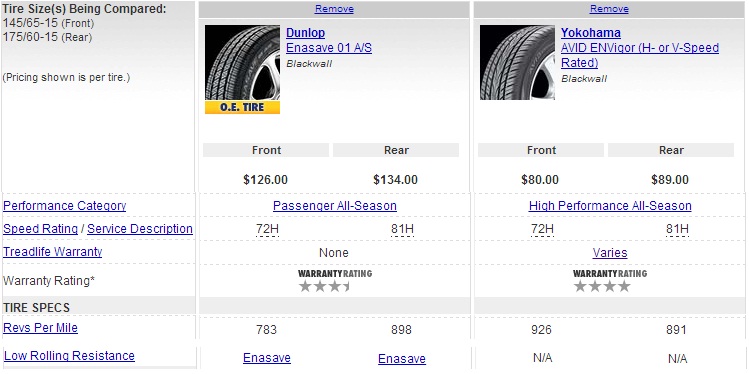MLucas said:
Based on JoeS experience I'm going to put those on the car, I can't lose 15% of my mileage because of a poor tire choice.
Don't be too surprised if that's exactly what happens when you install a new set of Ensaves
From the Tire Rack website, this discussion of LRR tires
"Will you see an immediate measurable impact on your fuel economy with a new set of tires? Not necessarily, for a couple of reasons
1. New, Full-Treaded Tires Generate More Rolling Resistance Than Shallow-Treaded, Worn Tires
Tire rolling resistance gradually drops by about 20% during the life of a tire as the tread wears from its original molded depth to worn out. This can be attributed to the reduction in tread mass and rubber squirm, as well as subtle hardening of the tread compound during years of service and exposure to the elements.
While this gradual reduction in tire rolling resistance and minor increase in fuel economy may be too subtle to register during the tire's life on a tank-by-tank basis, the virtually instantaneous switch from worn tires to new tires (even if they are the same brand, type and size) will typically result in an increase in rolling resistance of about 20%. Since the automotive industry estimates a 10% increase in tire rolling resistance will result in a 1% to 2% decrease in vehicle fuel economy, drivers should expect to experience a potential 2% to 4% decrease in mpg.
2. New, Full-Treaded Tires Travel Farther per Tire Revolution Than Shallow-Treaded, Worn Tires
Vehicles are programmed with their Original Equipment (O.E.) tire's revolutions-per-mile to allow their odometers to calculate the distances traveled. Unfortunately vehicle odometers aren't always 100% accurate and the tire revolutions per mile will change as its tread wears.
While many of these individual differences may seem insignificant, it is easy to understand that when they are added together, the new tires may appear to reduce vehicle fuel economy. It also means that a Toyota Prius appearing to get 50.0 mpg just before replacing its worn-out tires with new tires of the same brand, type and size, might be reduced to registering just 47.25 mpg afterwards, even if all of the driving conditions were identical."
So, any new set of tires can appear to 'cost you' mileage (range in our case) over what you experiences with your old, worn, hardened tires and then you add in another couple percent because the new' larger tire offsets your odometer by about that amount
Wickipedia says changing from standard tires to LRR tires could save you 'as much as 1.5% to 4.5%' so not much of Joe's observed 15% can be directly attributed to the tires alone
If you pay double for the Ensaves only to notice the same thing Joe did with his new Yokohama's, you're probably not going to be a happy camper either
Don



